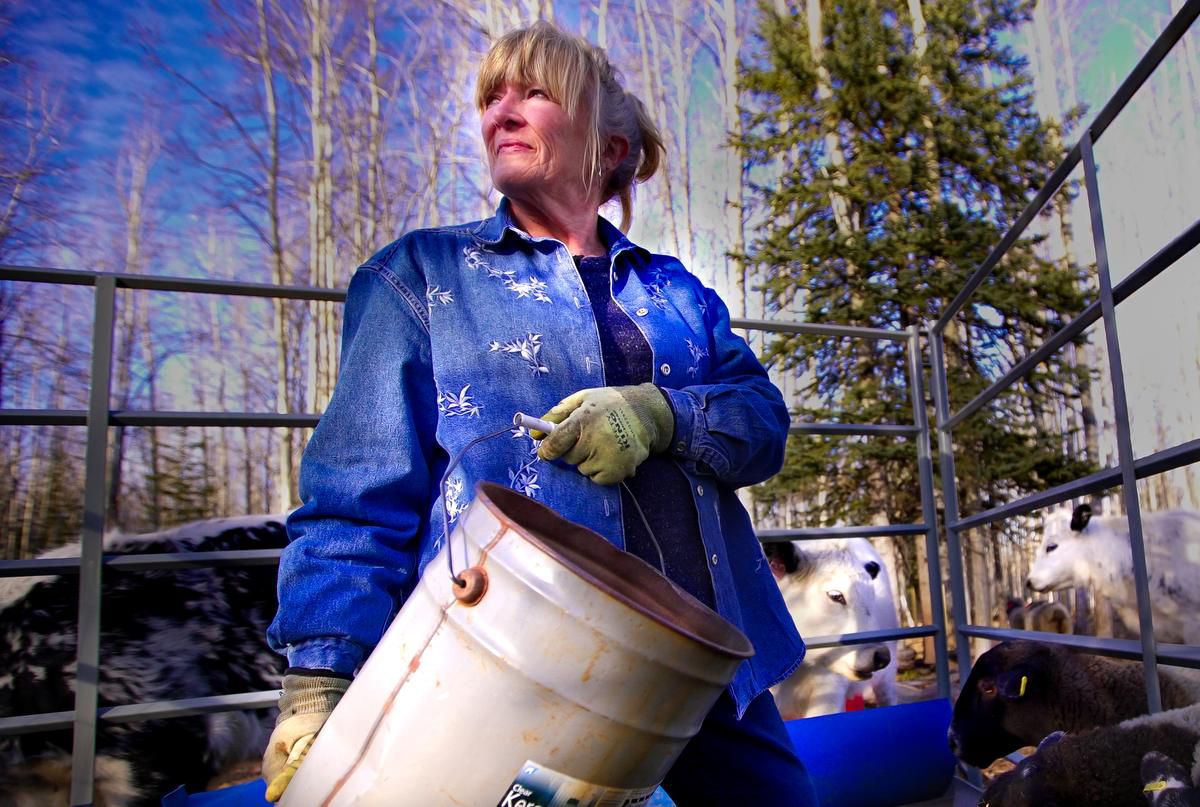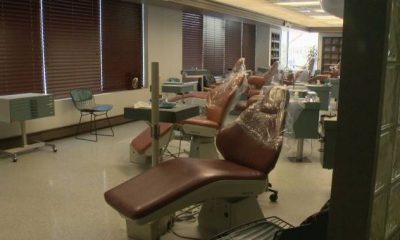Anglais
Faulty and unproven medical devices implanted in Canadian patients despite known risks
Published
5 années agoon
By
admin
[ad_1]
Medical devices pulled from the market in other countries because of health risks continued to be implanted into unwitting Canadians — sometimes with tragic results.
It is one of the ways Canada lags behind many other countries in protecting the public from medical devices — from artificial hips to breast implants to implantable defibrillators — that have caused debilitating injury and death, an investigation by the Toronto Star/CBC/Radio-Canada has found.
/https://www.thestar.com/content/dam/thestar/news/investigations/2018/11/25/faulty-and-unproven-medical-devices-from-vaginal-mesh-to-hip-replacements-implanted-in-canadian-patients-despite-known-risks/_1_nonie_wideman_1.jpg)
Medical devices have transformed innumerable lives around the world. Pacemakers have restored normal heart beats. Orthopedic implants, among the most popular of devices, have helped people walk again. Millions of Canadians are helped by sophisticated and complex devices every day. The numbers will continue to rise, and as they do, Health Canada is struggling to keep up.
Health Canada’s system designed to track incidents where devices may have harmed patients is so hobbled by under-reporting, the toll on Canadians is unknown. Never-before-released federal data shows at least 1,400 Canadians have died since 2008 in incidents involving devices that were designed to help them. During those 10 years, another 14,000 Canadians were injured.
Our investigation has found a flawed and secretive regulatory system:
- Some high-risk devices are approved based on evidence from older products and animal studies — not new trials done in humans — meaning patients may unknowingly be subjects in what a leading Toronto surgeon called “one large clinical trial.” A vaginal mesh sling Canadian researchers say was only ever tested in animals and cadavers was pulled from the market after another country raised safety concerns.
- The oversight of devices once they are on the market is reliant on the industry that makes and sells the products. These companies are in charge of reporting potential problems, testing their own products suspected of malfunctioning or causing serious health problems, and hiring private companies to inspect Canadian facilities that manufacture high-risk devices.
- Health Canada’s warnings about devices can come weeks, months and even years after other countries have publicly flagged risks. Some Canadians are never told their implants have been recalled or subject to safety warnings, leaving them feeling that they’re more likely to be notified about a problem with their car than a potentially defective device inside their bodies.
The government also continues to oppose the creation of a medical device registry, despite calls from doctors, some politicians and patients who say it would help detect emerging health problems connected to medical devices.
In emailed statements, Health Canada said it carefully monitors the quality and safety of medical devices, and responds swiftly to safety risks.
“Health Canada assesses the potential impact of product suspension or removal on Canadian patients, including unintended consequences of any regulatory action. Some products that may not be beneficial to some individuals are beneficial to others,” the regulator said.
“Our highest priority in determining that balance is public safety.”
The Star/CBC/Radio-Canada investigation is part of the first-ever global examination of the medical device industry and its overseers. Over the course of a year, more than 250 journalists at 58 news organizations in 36 number countries spoke with hundreds of doctors, researchers, industry insiders and patients.
The International Consortium of Investigative Journalists has created a public database: A global compilation of data that frustrated patient advocates have sought from national and international health authorities for years. But it only hints at larger problems. Many adverse events are never reported. Many health authorities refuse to make public, or simply never collect, information about patient harm.
Medical devices are a $400-billion global industry, so expansive that one manufacturer says its products and services benefit more than 70 million people each year — two lives improved every second.
“Our industry has a strong track record of safety when you consider the millions of medical devices implanted in Canadians and the devices Canadians use every day,” said a spokesperson from MEDEC, an industry association of Canadian medical device and technology companies.
“We are very proud of what we do, helping Canadians live longer, higher quality lives through innovative health technologies.”
A MEDEC spokesman said medical devices undergo a “rigorous review process” in Canada to ensure they are safe and effective.
That regulatory scrutiny, however, pales in comparison to what is given to its sister industry, pharmaceuticals. New drugs must go through a randomized controlled trial before they reach the market.
Some high-risk devices implanted in the bodies of Canadians, meanwhile, are approved by this country’s regulator without evidence from studies done in humans.
Instead, they get put on the market based on their similarity to devices already being used.
This was the case for many transvaginal mesh devices, woven synthetic netting surgically inserted through a woman’s vagina to treat prolapsed pelvic organs or incontinence, which came onto the global market in a flurry of approvals in the 2000s. A 2017 study of U.S. approvals found some of these devices, also known as pelvic meshes, relied on evidence from a mesh that had been recalled by its manufacturer years earlier.
In Canada, the evidence showing a new device is effective often comes from mechanical testing and studies using animals or cadavers.
“Imposing a requirement to have a randomized clinical trial for all high-risk medical devices would result in a delay in access to many medical devices in Canada,” Health Canada said. “This would result in Canada never having access to some medical devices.”
There are also ethical and practical reasons industry cannot conduct trials with devices as is done with drugs, said a MEDEC spokesman, including the “risks associated with conducting unnecessary surgeries.”
The current system puts patients at risk, says Dr. Jan Willem Cohen Tervaert, director of rheumatology at the University of Alberta’s medical school.
“We are allowing medical devices on the market without sufficient proof of safety,” he said.
When the Gynecare TVT Secur System, a pelvic mesh sling to treat urinary incontinence, was introduced in Canada in 2006, the device had never been used in a patient, according to a medical journal article written by Canadian doctors and researchers.
Noreen “Nonie” Wideman was implanted with the mesh sling in June 2008. She remembers it was pitched as a safe and simple 15-minute procedure that would cure her urinary incontinence, a source of embarrassment and frustration for the British Columbia woman.
“I really wanted to have a deep belly laugh just once without having wetted myself,” she said. “In hindsight, I would have just rather kept wetting my pants than to go through everything I have gone through.”
An active 53-year-old, Wideman’s health deteriorated. It hurt to walk up stairs. “It’s like someone stuck a knife in you and you can’t pull it out. The more you move, the more it hurt,” she said.
Doctor after doctor couldn’t explain what was causing the pain. While doing a self-examination, she felt a hard ridge jutting into her vagina. Using a microscope borrowed from the local school, she studied blue filament threads that she had found in her underwear and her pee. The mesh was eroding inside her. And she needed to get it out.
/https://www.thestar.com/content/dam/thestar/news/investigations/2018/11/25/faulty-and-unproven-medical-devices-from-vaginal-mesh-to-hip-replacements-implanted-in-canadian-patients-despite-known-risks/nonie_wideman_microscope_2.jpg)
When she woke up after it was removed in December 2011, the stabbing pain was gone.
The following year, in 2012, Ethicon announced that it would stop selling TVT Secur and three other mesh products. The decision came five months after the U.S. Food and Drug Administration ordered Ethicon and manufacturers of other transvaginal meshes to conduct further studies to “address specific safety and effectiveness concerns.”
In a statement, Ethicon, a subsidiary of Johnson and Johnson, said it stands behind the safety of its pelvic mesh devices “which have benefited millions of patients who continue to find relief from the debilitating conditions that led to their surgeries.”
The company said the TVT Secur “was tested in humans before it was marketed.”
“The company performed human cadaver labs, collected data on a small group of TVT Secur patients, and performed an interim analysis on short-term data from a subset of patients in a small prospective single-arm clinical trial,” an Ethicon spokesperson said in a statement. This research, coupled with evidence supporting an earlier version of its TVT mesh that remains on the market, “demonstrated the safety and efficacy of TVT Secur.”
The decision to stop selling the TVT Secur worldwide “was a business decision, not related to device clinical performance and safety.”
In 2017, Australia’s device regulator banned mesh products with the sole use was to treat pelvic organ prolapse (when pelvic organs such as the bladder or uterus drop from their normal position and push on or through the vagina). A review by Australian authorities concluded “there is little evidence to support the overall effectiveness of these surgical meshes.” In 2018, the United Kingdom declared a “national pause” on the use of the vaginal meshes while a special advisory group studies their use.
Health Canada says the benefits of the meshes “continue to outweigh the potential risks.”
In April 2018, in response to a petition launched by Wideman calling for restrictions on the use of the mesh, the government said it has conducted several safety reviews and “considers the adequate evidence of safety and effectiveness” has been established.
“It made me feel like I have no confidence in the regulatory system,” said Wideman. She received an out-of-court settlement from Ethicon earlier this year. The details are confidential. From the money she received, she had to give a significant amount to the B.C. government to cover the costs of removing her mesh, she said.
Compared to other countries, Canada is slow to warn the public about new risks associated with devices.
In 2010, the U.S. FDA issued a warning about vascular filters implanted to prevent pulmonary embolisms. The filters, intended to be removed once the risk of an embolism passes, were being left in, putting patients at risk of a host of problems including filter fractures.
Nearly six years passed before Health Canada issued a similar warning.
The biggest market for medical devices — people 65 or over — will grow by more than 60 per cent to nearly 1 billion people worldwide by 2030, a UBS investment analyst recently noted. Yet the implant industry isn’t only counting on favourable demographics to grow its business. Well-established medical devices are regularly upgraded in order to drive innovation and sales. Some experts estimate the standard lifecycle of a device before it is superseded by the next model is now just 18 to 24 months.
Too often, devices get swept onto the market under the guise of innovation, said Dr. Rita Redberg, a cardiologist and editor of the medical journal, JAMA Internal Medicine.
“It’s not innovative just because it’s new,” Redberg said. “To be innovative, you have to have some data that shows this is not just new but safe and effective.”
/https://www.thestar.com/content/dam/thestar/news/investigations/2018/11/25/faulty-and-unproven-medical-devices-from-vaginal-mesh-to-hip-replacements-implanted-in-canadian-patients-despite-known-risks/gloria_mcsherry.jpg)
Gloria McSherry was a 53-year-old Toronto woman with an active fitness regimen when she received a metal-on-metal hip implant, the Durom Cup made by Zimmer. It was 2007. For roughly a decade, device makers had marketed these metal-on-metal products as the latest innovation in hip replacement, ideal for younger, active patients who wanted a hip that would last a lifetime.
Soon after McSherry’s surgery, she felt something wasn’t right. Her hip throbbed. She couldn’t go outside when it was freezing or her left side would seize. Her leg shifted around in the hip socket, liable to scrape and jam without any warning, shooting pain throughout her whole body.
“I would wake up in the morning for those three years and I would never know what length my leg would be. It would sometimes be an inch off,” she said. “I had these inserts to put in my shoes depending on what kind of day it was going to be.”
It wasn’t until she sought the opinion of a U.S. surgeon in March 2009 that she learned the company had temporarily halted sales of the device in the U.S. almost a year earlier following warnings by a prominent surgeon that the implants had a high failure rate.
In a July 2008 letter to U.S. surgeons, Zimmer strongly recommended that doctors “stop implanting the Durom Cup” until they received additional training on proper surgical techniques.
The Durom Cup continued to be sold and implanted in Canada, where Zimmer said doctors had received “substantial surgeon training.”
Zimmer continued marketing the artificial hip in Canada after 2010, when, according to U.S. lawyers suing the manufacturer, the company permanently stopped selling the device in America. The Canadian licence for Durom Cup was cancelled in 2012 “after Health Canada imposed rigorous conditions to all metal-on-metal hip implants,” the regulator said.
While selling the artificial hips, Zimmer had not tracked who was having them implanted. The company only knew that it had sold at least 4,941 Durom Cups to Canadian hospitals. Hospital staff had to dig through records to identify patients so they could be contacted for a class-action lawsuit against Zimmer, in which McSherry took part. The company has since settled the lawsuit, paying more than $172,000 to each patient who had “complicated” surgeries to replace the implant. The settlement, the company said, was not an admission of guilt.
The company, now known as Zimmer Biomet after a merger, refused to answer questions.
“The safety of patients has always been, and continues to be, Zimmer Biomet’s top priority and it is our honour to be a leader in this industry for the past 90 years,” it said in a statement.
Industry influence reaches into Canadian operating rooms, where company sales representatives are routinely invited by surgeons to advise during implantation of devices into patients.
The reps are seen as having an “indispensable” role on the surgery team, according to a 2017 Canadian study that interviewed 22 surgeons about their relationships with industry. Surgeons said the reps assisted in assembling and inserting complex devices, which could enhance patient safety and mitigate the risk of things going awry.
“We can’t get along without each other,” one physician told the study’s authors.
Still, the surgeons were leery of the potential conflicts of interest that came with the interactions, and noted some reps weren’t as forthcoming when disclosing device defects.
One physician said he disliked having reps in the operating room and the “chumminess” that came with it.
“When you develop a relationship sometimes you get yourself caught in a hole where you don’t want to use other implants when sometimes you probably should,” the surgeon said.
Even device representatives can find operating room coziness uncomfortable, according to a 2011 U.S. study citing the experiences of 17 device reps who described pushing “customer service boundaries” by taking part in clinical decisions around how devices were installed, managed and even deactivated.
“In places where we do the (device) checks, (patients) don’t treat us any differently than any doctor or nurse,” one company representative said. “We get a lot of them assuming that you are a physician.”
Health Canada collects reports of incidents in which devices are suspected to have malfunctioned or caused injury or death. The regulator relies on these reports to look for patterns to detect emerging safety problems.
This post-market surveillance system is hindered by the “known and chronic” problem of under-reporting of incidents, Health Canada said. Right now, device companies are the only ones required to report incidents to the government.
“When you have an adverse event occur, if the manufacturer is the only one that’s going to be reporting then you have only their viewpoint of what happened,” said Madris Tomes, a former FDA data specialist who runs a company that analyzes adverse events.
Regulations are in the works that would make it mandatory for Canadian hospitals to report incidents involving drugs and medical devices, and may be in place by late 2019.
Meanwhile, Health Canada continues to rely on industry, who has repeatedly failed to quickly notify the regulator about injuries and deaths involving their products, as required by law, our investigation found.
During the past decade, more than 14,800 incident reports — roughly 15 per cent of all the reports filed by the device industry — reached the regulator after the 10- or 30-day deadline. At least 21 recorded deaths were reported more than a year after the company became aware of them.
Health Canada said it’s working to improve its database to help it better enforce deadline rules.
It’s just one part of an oversight system that is heavily reliant on industry to keep itself in line.
“When something goes wrong, Medtronic investigates its own product and lets the government know what went wrong. What kind of inspection is that?” Jordan Marchant, who is suing the device manufacturer for negligence for alleged defects in one of its high-risk products, said in a statement to the Star.
Marchant was a 22-year-old training to be a pipefitter in Edmonton when he underwent cryoablation to treat a condition that caused his heart to sometimes race. During the operation, the Medtronic-made catheter fractured and Marchant suffered a stroke, his lawsuit said.
Like most broken medical devices, the catheter was sent to the manufacturer’s lab for testing. Marchant’s lawyer demanded a “hold” be put on the catheter to preserve it for independent testing, according to court records.
While Marchant alleges the catheter was defective, no independent analysis could be done. Medtronic had lost the device somewhere in its facilities. In its place, the company offered pictures of the catheter and the results of its lab testing.
Marchant said his life has changed dramatically since his stroke.
“Everything is slower than it used to be…I don’t have the same friends as I used to; people tell me my personality is different. I seem a lot more angry and frustrated all of the time. I have tried to work at jobs but they don’t work out,” Marchant said.
“I don’t feel happy like I was before.”
In its statement of defence, Medtronic said the catheter was not “defective in anyway,” and after the company sold the device, it was “under the exclusive care and control of the hospital, its staff and physicians over whom (Medtronic has) no control.”
In November 2017, Health Canada inspectors visited Medtronic’s Canadian headquarters in Brampton and found several deficiencies. The company had expired and unauthorized medical devices for sale, according to a summary posted on Health Canada’s website. The company received a “compliant” rating.
There are no public details about the latest inspection of Medtronic’s Montreal-area plant, where it manufactures cryoablation catheters like the one used on Marchant.
That’s because Health Canada does not actually inspect these facilities. Instead, the device manufacturers pay an accredited auditing company to inspect that the plant complies with standards. The results of these audits are shared with the regulator but are not made public.
In a statement, Medtronic said it has an unwavering “commitment to patient safety, transparency, compliance and ethical business practices.”
Health Canada said there are safeguards to prevent device makers from shopping for a favourable audit. The advantages the hired auditors offer “outweigh the potential risk introduced by having manufacturers pay for audits/inspections to meet regulatory requirements,” the regulator said.
Increasingly, doctors are calling on Health Canada to create a national device registry, which they say would help detect problems before they become widespread.
/https://www.thestar.com/content/dam/thestar/news/investigations/2018/11/25/faulty-and-unproven-medical-devices-from-vaginal-mesh-to-hip-replacements-implanted-in-canadian-patients-despite-known-risks/dr_butany.jpg)
Among them is Dr. Jagdish Butany, cardiovascular pathologist with Toronto’s University Health Network. In 1997, Butany noticed eight cases of a new heart valve failing within weeks or months of implantation. The surgeons performing the operations hadn’t recognized the trend until Butany connected the dots. The hospital agreed to stop implanting the valves, but the valve’s manufacturer and Health Canada were more dismissive of his concerns, he said.
The valves continued to be implanted worldwide. In fall 1999, Australia yanked the valve’s approval over concerns it increased the risk of blood clots. Health Canada did nothing until two months later, when the product was pulled worldwide following negative trial results. By then, the company had sold 36,000 valves, according to court records.
“The big thing that could’ve been done, that may have prevented this, and will prevent things in future, would be having a registry,” Butany said.
A registry would allow doctors and researchers to post details about malfunctioning products and look for recurring problems that may have been ignored as one-offs, he said. “There are newer devices that are being put in, we don’t know what happens to them, we don’t know how long they last,” Butany said.
The Canadian government has rejected calls for national registries for implantable devices, saying they’re a costly, regulatory burden for manufacturers that can have limitations to the reliability of the information collected.
Health Canada said it supports the development of patient registries set up by professional associations or manufacturers.
Butany suggests the companies that sell devices could bankroll registries.
“You and I and the province paid for that device to be put in, we paid for it to be taken out, now we have to pay again for another one to be put in. There’s something wrong with that scenario,” he said.
“To each individual (company) it wouldn’t be that big an amount, collectively it would be a significant amount. It would spare Health Canada having to use their scarce resources for a registry, which they clearly don’t have the money for.”
Sometimes, Canadians have to take it upon themselves to have devices removed.
/https://www.thestar.com/content/dam/thestar/news/investigations/2018/11/25/faulty-and-unproven-medical-devices-from-vaginal-mesh-to-hip-replacements-implanted-in-canadian-patients-despite-known-risks/tracy_hillier_before_surgery_selfie.jpg)
Tracy Hillier was 29 in 2012 when she was implanted with Essure, a form of permanent birth control in which tiny metal coils are inserted through the vagina into the fallopian tubes. She said she experienced chronic pelvic pain and heavy bleeding soon after the procedure. She couldn’t run or have sex with her husband without pain.
She bounced between doctors in central Newfoundland trying to figure out what was wrong. It was only when she saw a documentary about Essure in August 2018 that she realized the device’s maker had stopped selling Essure in Canada roughly a year earlier.
Hillier was determined to have the coils removed but said she could not wait on — or trust — the healthcare system that had not told her the device was no longer on the market.
Hillier booked a trip to Texas to see a surgeon who specializes in removing Essure implants. In the end, the trip and procedure cost her close to $20,000 — a significant chunk of her annual salary as an insurance broker.
“I maxed out my credit card but I think it’s worth it. I needed to get these poisonous coils out of me,” she said.
/https://www.thestar.com/content/dam/thestar/news/investigations/2018/11/25/faulty-and-unproven-medical-devices-from-vaginal-mesh-to-hip-replacements-implanted-in-canadian-patients-despite-known-risks/tracy_hillier_x_ray.jpg)
In a statement, device manufacturer Bayer said it stands “by the safety and efficacy of Essure which are demonstrated by an extensive body of research, undertaken by Bayer and independent medical researchers, involving more than 200,000 women over the past two decades.” Bayer said its decision to stop selling Essure was based on “market specific factors,” including decreases in sales.
On Sept. 13, the Texas surgeon removed Hillier’s fallopian tubes, cervix and uterus. One of the coils had penetrated her uterus and was jutting out, she said.
The experience “robbed me of my organs.”
Hillier has hired a lawyer, and she plans to join the thousands of people around the world suing the manufacturer of a medical device that they say has caused them harm.
Data analysis: Andrew Bailey and Valerie Ouellet
Jesse McLean is a Toronto-based investigative reporter. Follow him on Twitter: @jesse_mclean
Robert Cribb is a Toronto-based investigative reporter. Follow him on Twitter: @thecribby
It looks as if you appreciate our journalism. Our reporting changes lives, connects communities and effects change. But good journalism is expensive to produce, and advertiser revenue throughout the media industry is falling and unable to carry the cost. That means we need you, our readers. We need your help. If you appreciate deep local reporting, powerful investigations and reliable, responsible information, we hope you will support us through a subscription. Please click here to subscribe.
TOP STORIES, DELIVERED TO YOUR INBOX.
[ad_2]
Source link
You may like
-


Gerald Butts’ departure marks end of position rarely seen in Canadian political life
-


Canadian airlines waiting for clarity before changing policies on ticket gender options
-


Royal Canadian Navy culture a barrier to recruitment efforts: retired commander
-


Canadian captured in Syria admits to role in gruesome ISIS execution videos
-


Don’t allow cannabis edibles that look like candy, medical officer of health says
-


Calgary orthodontists stepping up after patients allege they paid for services they didn’t receive – Calgary
Anglais
Nostalgia and much more with Starburst XXXtreme
Published
3 années agoon
août 10, 2021By
admin
Get a taste of adventure with Starburst XXXtreme based on the legendary NetEnt Game. The nostalgic themes are sure to capture fans of the classic version as they get treated to higher intensity, better visuals, and features. The most significant element of the game is its volatility. Patience will not be an essential virtue considering the insane gameplay, and there is a lot of win potential involved. It retains the original makeup of the previous game while adding a healthy dose of adrenaline.
Starburst Visuals and Symbols
The game is definitely more conspicuous than before. The setting happens over a 5-reel, 3-row game grid with nine fixed win lines, which function if a succession from the left to the right reel is present. Only those players that that attain the highest win per bet line are paid. From a visual standpoint, the Starburst XXXtreme slots illustrates lightning effects behind the reels, which is not surprising as it is inherited from the original version. Available themes include Classic, Jewels, and Space. The game is also available in both desktop and mobile versions, which is advantageous for players considering the global pandemic. According to Techguide, American gamers are increasingly having more engaging gaming experiences to socialize to fill the gap of in-person interaction. Starburst XXXtreme allows them to fill the social void at a time when there is so much time to be had indoors.
Starburst XXXTreme Features
Players get to alternate on three features which are Starburst Wilds, XXXtreme Spins, and Random Wilds. The first appears on reels 2,3, or 4. When these land, they expand to cover all positions while also calculating the wins. They are also locked for a respin. If a new one hits, it also becomes locked while awarding another respin. Starburst XXXtreme offers a choice between two scenarios for a higher stake. In one scenario with a ten times stake, the Starburst Wild is set on random on reels 2,3, or 4, and a multiplier starts the respin. The second scenario, which has a 95 times stake, starts with two guaranteed starburst wilds on reels 2,3, or 4. it also plays out using respin game sequence and features. The game also increases the potential with the Random Wilds feature to add Starburst Wilds to a vacant reel at the end of a spin. Every Starburst Wild gives a random multiplier with potential wins of x2, x3, x5, x10, x25, x50, x100, or even x150.
The new feature is sure to be a big hit with the gaming market as online gambling has shown significant growth during the lockdown. AdAge indicates the current casino customer base is an estimated one in five Americans, so Starburst XXXtreme’s additional features will achieve considerable popularity.
What We Think About The Game
The gambling market has continued to diversify post-pandemic, so it is one of the most opportune times to release an online casino-based game. Thankfully Starburst XXXtreme features eye-catching visuals, including the jewels and space themes. These attract audience participation and make the gameplay inviting. The game also has a nostalgic edge. The previous NetEnt iteration featured similar visuals and gameplay, so the audience has some familiarity with it. The producers have revamped this version by tweaking the features to improve the volatility and engagement.
That is characterized by the potential win cap of 200,000 times the bet. Starburst XXXtreme does not just give betting alternatives for players that want to go big. The increase of multipliers also provides a great experience. If the respins in the previous version were great, knowing that multipliers can go hundreds of times overtakes the game to a new level.
Players should get excited about this offering. All of the features can be triggered within a single spin. Whether one plays the standard game or takes the XXXtreme spin route, it is possible to activate all of the features. Of course, the potential 200,000 times potential is a huge carrot. However, the bet size is probably going to be restricted and vary depending on the casino. It is also worth pointing out that a malfunction during the gameplay will void all of the payouts and progress. Overall, the game itself has been designed to provide a capped win of 200,000 times the original bet.
Anglais
‘We’re back’: Montreal festival promoters happy to return but looking to next year
Published
3 années agoon
juillet 23, 2021By
admin
In downtown Montreal, it’s festival season.

In the city’s entertainment district, a musical act was conducting a sound check on stage Friday evening — the second day of the French-language version of the renowned Just For Laughs comedy festival. Tickets for many of the festival’s free outdoor shows — limited by COVID-19 regulations — were sold out.
Two blocks away, more than 100 people were watching an acoustic performance by the Isaac Neto Trio — part of the last weekend of the Festival International Nuits d’Afrique, a celebration of music from the African continent and the African diaspora.
With COVID-19 restrictions continuing to limit capacity, festival organizers say they’re glad to be back but looking forward to next year when they hope border restrictions and capacity limits won’t affect their plans.
Charles Décarie, Just For Laughs’ CEO and president, said this is a “transition year.”
“Even though we have major constraints from the public health group in Montreal, we’ve managed to design a festival that can navigate through those constraints,” Décarie said.
The French-language Juste pour rire festival began on July 15 and is followed by the English-language festival until July 31.
When planning began in February and March, Décarie said, organizers came up with a variety of scenarios for different crowd sizes, ranging from no spectators to 50 per cent of usual capacity.
“You’ve got to build scenarios,” he said. “You do have to plan a little bit more than usual because you have to have alternatives.”

Anglais
MELS new major movie studio to be built in Montreal
Published
3 années agoon
juillet 23, 2021By
admin
MONTREAL — MELS Studios will build a new film studio in Montreal, filling some of the gap in supply to meet the demand of Hollywood productions.
MELS president Martin Carrier said on Friday that MELS 4 studio construction will begin « as soon as possible », either in the fall or winter of next year. The studio could host productions as early as spring 2023.
The total investment for the project is $76 million, with the Quebec government contributing a $25 million loan. The project will create 110 jobs, according to the company.
The TVA Group subsidiary’s project will enable it to stand out « even more » internationally, according to Quebecor president and CEO Pierre Karl Péladeau. In the past, MELS Studios has hosted several major productions, including chapters of the X-Men franchise. The next Transformers movie is shooting this summer in Montreal.
Péladeau insisted that local cultural productions would also benefit from the new facility, adding that the studio ensures foreign revenues and to showcase talent and maintain an industry of Quebec producers.
STUDIO SHORTAGE
The film industry is cramped in Montreal.
According to a report published last May by the Bureau du cinéma et de la télévision du Québec (BCTQ), there is a shortage of nearly 400,000 square feet of studio space.
With the addition of MELS 4, which will be 160,000 square feet, the company is filling part of the gap.
Carrier admitted that he has had to turn down contracts because of the lack of space, representing missed opportunities of « tens of millions of dollars, not only for MELS, but also for the Quebec economy. »
« Montreal’s expertise is in high demand, » said Montreal Mayor Valérie Plante, who was present at the announcement.
She said she received great testimonials from « Netflix, Disney, HBO and company » during an economic mission to Los Angeles in 2019.
« What stands out is that they love Montreal because of its expertise, knowledge and beauty. We need more space, like MELS 4, » she said.
There is still not enough capacity in Quebec, acknowledged Minister of Finance, the Economy and Innovation Eric Girard.
« It is certain that the government is concerned about fairness and balance, so if other requests come in, we will study them with the same seriousness as we have studied this one, » he said.
Grandé Studios is the second-largest player in the industry. Last May, the company said it had expansion plans that should begin in 2022. Investissement Québec and Bell are minority shareholders in the company.
For its part, MELS will have 400,000 square feet of production space once MELS 4 is completed. The company employs 450 people in Quebec and offers a range of services including studio and equipment rentals, image and sound postproduction, visual effects and a virtual production platform.


MAPEI Canada inaugure l’agrandissement de son usine à Laval, au Québec

Le Gala Elles reconnaissent célèbre les femmes remarquables de l’industrie de la construction

Préparez votre maison pour l’hiver afin d’éviter les réclamations d’assurance

Quatre façons de commencer à travailler dans le domaine des ventes

La Commission indépendante soutient le recours de la Cour suprême contre le déni des droits des non-francophones par le Québec

Justin Trudeau est un raciste contre les Noirs et les Premières Nations – 14 signes

Enfants aux études loin de la maison : Trois conseils pour veiller à la santé de leurs finances

Règles et règlements que toutes les entreprises canadiennes doivent connaître

Épargnez pour l’avenir grâce à nos trucs financiers pour la rentrée

Efficacité énergétique: 10 façons économiques de l’améliorer

Ces légendes du baccara vous dévoilent leurs secrets

Retard de vol : le devoir de la compagnie envers ses passagers

Nostalgia and much more with Starburst XXXtreme

Même les jeunes RÉPUBLIQUES se lassent du capitalisme, selon les sondeurs américains — RT USA News

« Aucune crise climatique ne causera la fin du capitalisme ! »

Innovation : le capitalisme « responsable », faux problème et vraie diversion

Vers la fin du Capitalocène ?

Le “capitalisme viral” peut-il sauver la planète ?

Livre : comment le capitalisme a colonisé les esprits

Patrick Artus : « Le capitalisme d’aujourd’hui est économiquement inefficace »

Body found after downtown Lethbridge apartment building fire, police investigating – Lethbridge

Comment aider un bébé à développer son goût

Head of Toronto Community Housing placed on paid leave

Salon du chocolat 2018: les 5 temps forts

This B.C. woman’s recipe is one of the most popular of all time — and the story behind it is bananas

Gluten-Free Muffins

We Try Kin Euphorics and How to REALLY Get the Glow | Healthyish

Man facing eviction from family home on Toronto Islands gets reprieve — for now

Condo developer Thomas Liu — who collected millions but hasn’t built anything — loses court fight with Town of Ajax

27 CP Rail cars derail near Lake Louise, Alta.

Ontario’s Tories hope Ryan Gosling video will keep supporters from breaking up with the party

Renaud Capuçon, rédacteur en chef du Figaroscope

Paris : chez Cécile Roederer co-fondatrice de Smallable

Ontario Tories argue Trudeau’s carbon plan is ‘unconstitutional’

100 years later, Montreal’s Black Watch regiment returns to Wallers, France

Trudeau government would reject Jason Kenney, taxpayers group in carbon tax court fight

Ford Ranger Raptor, le pick-up roule des mécaniques

Los Angeles poursuit The Weather Channel pour atteinte à la vie privée

Le Forex devient de plus en plus accessible aux débutants

The Bill Gates globalist vaccine depopulation agenda… as revealed by Robert F. Kennedy, Jr.
Trending
-

 Anglais5 années ago
Anglais5 années agoBody found after downtown Lethbridge apartment building fire, police investigating – Lethbridge
-

 Santé Et Nutrition4 années ago
Santé Et Nutrition4 années agoComment aider un bébé à développer son goût
-

 Anglais5 années ago
Anglais5 années agoHead of Toronto Community Housing placed on paid leave
-

 Styles De Vie5 années ago
Styles De Vie5 années agoSalon du chocolat 2018: les 5 temps forts
-

 Anglais5 années ago
Anglais5 années agoThis B.C. woman’s recipe is one of the most popular of all time — and the story behind it is bananas
-

 Santé Et Nutrition6 années ago
Santé Et Nutrition6 années agoGluten-Free Muffins
-

 Santé Et Nutrition5 années ago
Santé Et Nutrition5 années agoWe Try Kin Euphorics and How to REALLY Get the Glow | Healthyish
-

 Anglais5 années ago
Anglais5 années agoMan facing eviction from family home on Toronto Islands gets reprieve — for now


